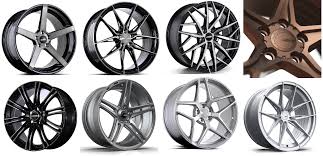Once we look at the different parts that give rise to a vehicle’s overall performance, rims is probably not the very first thing pops into your head. Even so, these seemingly basic spherical components play an important role in determining the way a vehicle deals with, speeds up, and braking system. Let’s look into the necessity of rims in motor vehicle dynamics and investigate why they are important for reaching optimum driving functionality.
Unsprung Excess weight Reduction: Unsprung excess weight signifies the volume of factors not maintained by the vehicle’s suspension system, such as the wheels, wheels, braking systems, and one half of the control forearms. Bulkier rims raise unsprung bodyweight, which may negatively effect a vehicle’s managing, journey high quality, and efficiency. Top quality rims made out of light supplies for example aluminum alloys reduce unsprung excess weight, resulting in better speed, responsiveness, and cornering steadiness.
Rotational Inertia: Rotational inertia, also called moment of inertia, may be the level of resistance of an object to changes in its rotational velocity. Rims with bigger diameters or bulkier buildings have increased rotational inertia, which may have an impact on a vehicle’s acceleration and energy effectiveness. By deciding on light-weight rims with more compact diameters, drivers can minimize rotational inertia, allowing the engine to apply a lot less effort to turn the rims and facilitating quicker velocity and enhanced fuel economic climate.
Temperature Dissipation: While in aggressive driving or weighty braking, the friction in between the braking system padding and rotors creates a significant amount of heating. Substandard temperature dissipation can cause braking system fade away, reduced stopping energy, and in many cases braking system method failure. Quality rims with specific styles, like spoke designs that market airflow on the braking systems, support dissipate warmth more effectively, ensuring regular braking efficiency even under strenuous situations.
Tire Fitment and Compatibility: The size and style, offset, and bolt routine of rims determine their compatibility with certain tire sizes and vehicle applications. Picking out the appropriate rim sizing and counteract is vital for maintaining proper tire fitment, preventing rubbing or disturbance with the vehicle’s suspension factors or bodywork. Good quality rims are engineered with accurate features to guarantee ideal fitment and compatibility, enabling seamless integration with tires and suspensions solutions.
Artistic Attraction: Even though the practical facets of rims are paramount, their artistic attraction ought not to be neglected. Nicely-developed rims enhance the general graphic looks of any motor vehicle, maximizing its appearance and creating a strong document on the highway. Whether it’s the classic classiness of timeless models or maybe the modern day pizzazz of contemporary variations, high quality rims contribute to the vehicle’s aesthetic personal identity and represent the owner’s taste and character.
To sum up, rims (fälgar) are important components that significantly effect a vehicle’s dynamics, overall performance, and visual appearance. By comprehending their significance and deciding on good quality rims that put in priority light-weight development, productive heating dissipation, and proper fitment, car owners can open the total possible in their vehicles and savor a much more thrilling and gratifying driving encounter.


